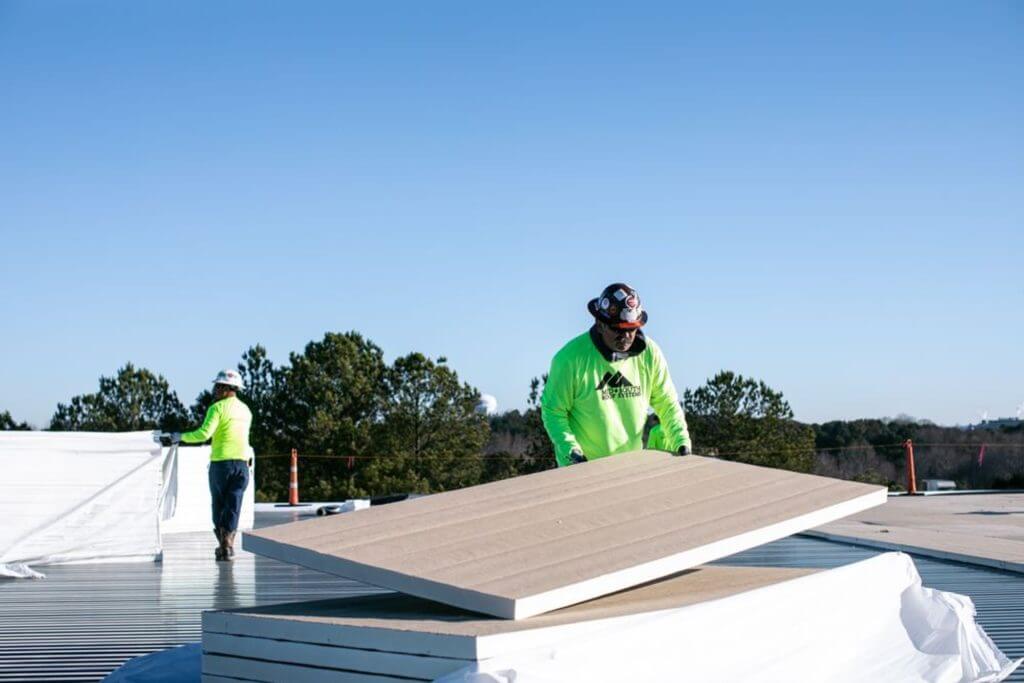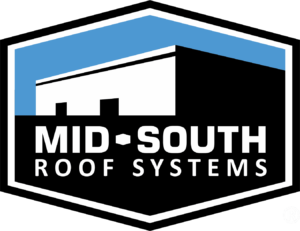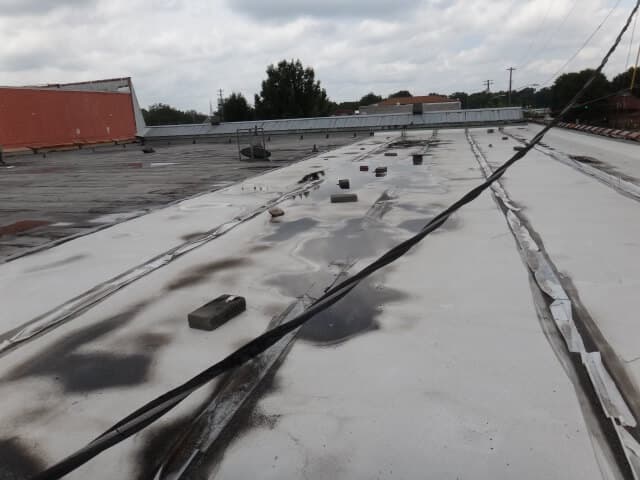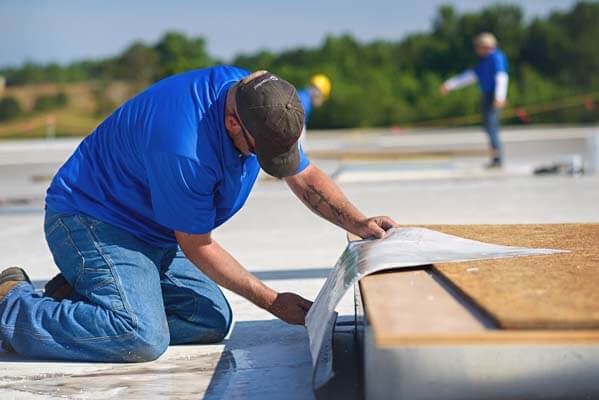Eco-Friendly Options for Commercial Roofing


The shared responsibility to take care of our planet begins with our day-to-day routines. This includes commercial roofing activity. As our community and our clients put a greater emphasis on eco-friendly practices, we’re eager to rise to the challenge by exploring environmentally responsible and sustainable options for our operations at Mid-South.
In the commercial roofing industry, professionals can embrace several eco-friendly practices. Making a building sustainable is first and foremost about managing heat exchange. A well-insulated building will keep the internal temperature under control, limiting energy use, emissions, and costs.
Since a commercial building’s roof is the largest, flattest surface area exposed to the elements, it’s also advantageous to consider the color of the roof relative to the climate. A light-colored roof in warm climates will reflect heat away from the building, and a dark-colored roof in cold climates will achieve the reverse. Keeping up with your maintenance and inspection schedule is another way you can contribute to sustainability. By taking care of your roof, you’ll extend its lifespan and optimize energy efficiency by catching repairs early.
In this blog post, we’ll take a closer look at some of the features of an eco-friendly commercial roof and how your choices can play an active role in energy efficiency.
Eco-Friendly Commercial Roofing Solutions
White Roof
A white roof (also known as a cool roof) is a light or white-colored material that reduces the amount of solar radiation absorbed by the surface, resulting in lower cooling costs and reduced environmental impact. White roof systems are most frequently made from TPO or PVC and sometimes treated with a reflective coating. We typically recommend a white roof system as the most energy-efficient option for warmer climates.
Black Roof
Black or dark-colored roofs accomplish the opposite of a cool roof as they absorb the sun’s energy. Typically made from EPDM or asphalt rubber, this type of roof will keep a building warmer in the wintertime, reducing heating costs and snow and ice buildup. This roofing option is usually recommended for facilities in cooler climates.
Standing-Seam Metal Roofs
Metal roofs are not ideal for southern climates, but we see a high volume of this type of roof system because it’s proportionately cheaper to install. Since this commercial roofing option absorbs heat so quickly, it’s not energy efficient. The metal conducts heat resulting in significant expansion and contraction as temperatures change. Clients often ask us to remedy the situation and create a more sustainable system for interior temperature control. On these projects, we’ll usually install EPS between the ribs of a standing-seam roof as a layer of insulation. Next, we’ll install a TPO membrane over the EPS layer and metal roof foundation. Alternatively, a slightly more economical but temporary solution is to coat the metal layer with a white reflective coating.
Vegetative Roof Systems (a.k.a. Green Roofs or Living Roofs)
While we don’t install vegetative roof systems at Mid-South, this option is becoming increasingly popular in urban communities. Green roofs reduce energy costs by absorbing heat and providing a natural insulating layer. The landscape of a green roof also contributes to air quality and helps with water retention. While green roofs offer many sustainable benefits, they also present several challenges from a building management perspective, such as requiring more structural support and extra maintenance.
Solar Panels
Solar panels are an effective way to leverage the surface area of a commercial roof and source renewable energy, ultimately reducing the carbon footprint. Clients can take advantage of a tax credit and a considerable depreciation of system costs by installing a solar array. If a client is interested in installing solar panels, we try to schedule panel installation in the same time frame as a new roof since solar panels and new commercial roof systems have comparable lifespans (about 15-20 years). The panels are either placed on an external support system or through the roof. Solar installation crews will work directly with our roofing contractors during the process to make sure the manufacturer’s warranty is protected. When planning for a solar panel system, it’s important to reserve enough space to allow for roof maintenance. Crews must be able to navigate through or move components to access the roof itself.
The Right Team for the Job
Our top recommendation when considering an environmentally friendly building: don’t settle for the standard spec. You should start thinking about eco- and energy-focused options at the beginning of your design process. If you’re going to install a new energy-conscious roof option or are planning a re-roof, it’s essential to ask the right questions and select the design elements that will contribute to the most sustainable roof system for your climate.
We’re continuously keeping a pulse on new technology and more sustainable, energy-efficient options for your roof system at Mid-South. With over 30 years of experience in the commercial roofing industry, our agile team can adapt to embrace innovative technologies, tools, and materials to ensure a better future for our community and our planet.
LIKE WHAT YOU JUST READ?
Sign up for our newsletter to get fresh articles, updates and more!
Choosing To Re-Roof or Repair: 2 Case Studies Illustrate the Decision-Making Process
When a building owner discovers problems with a roof, it may not be immediately clear if the problem will require minimal repair work or a full-scale replacement. So how to differentiate between the two? Repairs often entail a smaller up-front expenditure, but, depending on the owner’s goals for the building, a full re-roof may provide…
Four Signs Your Roof Is Failing
Like anything in life, a roof is at risk of failing if it’s not given proper attention. A large roof needs to be inspected, treated and repaired on a regular basis if it’s to have a long life. There are many potential causes for a roof to fail prematurely if left untreated, but here are…


